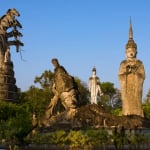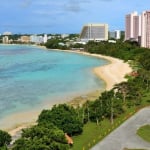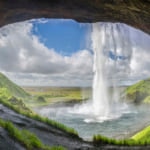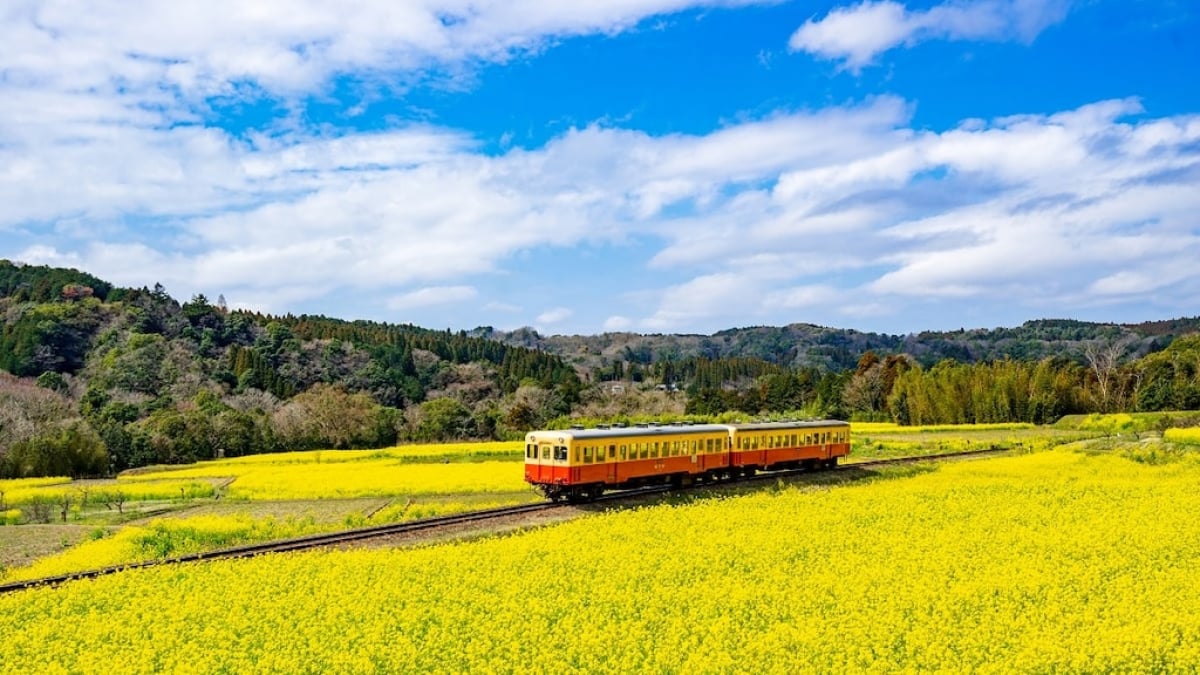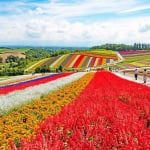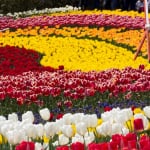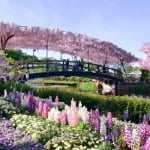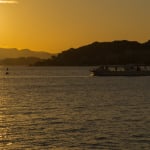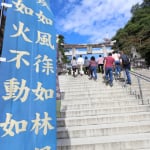Recommended tourist spots along the Kamakura Kominato Railway and Isumi Railway lines in Chiba Prefecture
The Kominato Railway and Isumi Railway are among the closest local train lines to the Tokyo metropolitan area. The Kominato Railway (formerly known as Kominato Tetsudo) starts from Goi Station in the inner Boso region of Chiba Prefecture, passing through Yoro Keikoku Station and ending at Kazusa-Nakano Station. The Isumi Railway extends from Kazusa-Nakano Station to Ohara Station on the outer Boso coast. Looking at the route map, both lines cross the Boso Peninsula, and many travelers use both the Kominato and Isumi Railways for their journey. During the spring season, tourists flock to see the rapeseed flowers and cherry blossoms, while in the summer, sunflowers attract visitors, making each season a busy time for sightseeing.
It is also possible to plan a day trip from Tokyo without staying overnight. There are many gourmet tourist spots along the Kominato Railway and Isumi Railway. In this article, we will introduce the charm of the Kominato Railway, the Isumi Railway, and the attractions along their lines.
What are the Kominato Railway and Isumi Railway? Both the Kominato Railway and the Isumi Railway are non-electrified, and the sight of diesel-powered trains running between stations gives off a nostalgic Showa-era atmosphere, which can be appreciated even by those who are not train enthusiasts.
table of contents
[x] close
Recommended tourist spots along the Kamakura Kominato Railway and Isumi Railway lines in Chiba Prefecture
What are Kominato Railway and Isumi Railway?
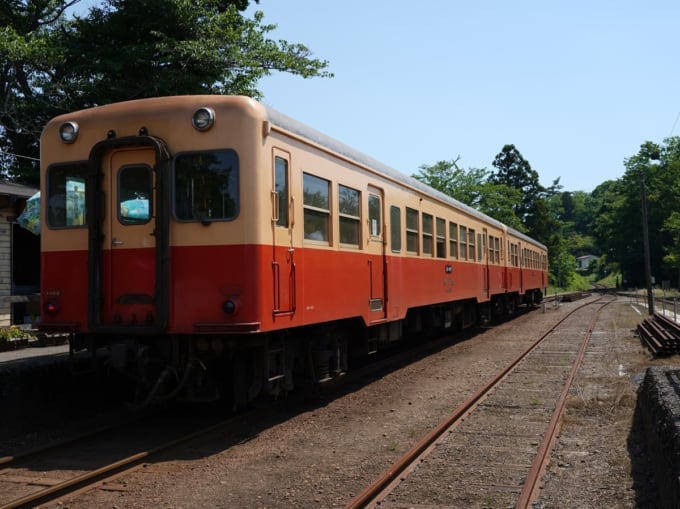
Both the Kominato Railway and the Isumi Railway are non-electrified, and even those who are not rail fans will recognize the atmosphere of the Showa era as the diesel railcars come and go. The Kominato Railway connects
Goi Station on the JR Uchibo Line to Kazusa-Nakano Station in Otaki Town, Isumi County, but all stations except Kazusa-Nakano Station belong to Ichihara City, and the entire route takes about an hour and a half.
By the way, the Kominato Railway does not pass through Kominato (Awa-Kominato), but construction was carried out with the aim of getting there, but it collided with the National Railways Kihara Line (now the Isumi Railway) at Kazusa-Nakano Station, and it was decided that the mission of crossing the Boso Peninsula had been accomplished. So the construction was stopped.
In recent years, the railway has been working to secure tourists by operating the "Boso Satoyama Trolley". Some of the Kominato Railway's facilities are designated as registered tangible cultural properties.
Isumi Railway
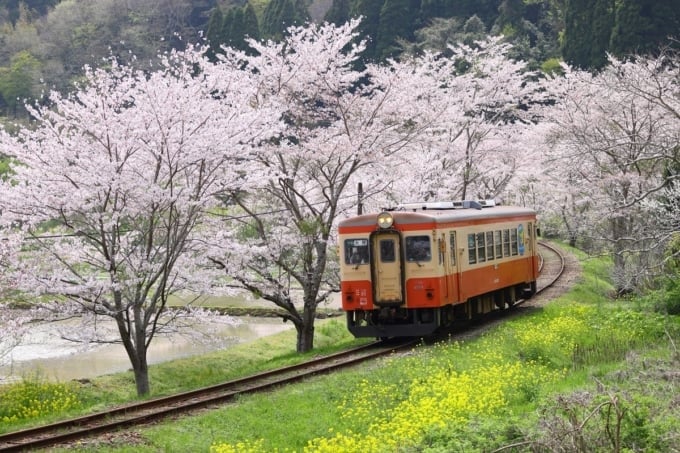
The Isumi Railway connects Ohara Station on the JR Sotobo Line to Kazusa-Nakano Station, passing through Otaki Town’s Otaki Station, covering a distance of 26.8 km in just under an hour. As mentioned earlier, this railway was originally the Kihara Line of the national railways, which was taken over by the Isumi Railway, a third-sector company, in 1988. The railway has been engaged in unique initiatives, such as acquiring vehicles that previously ran on the JR Oito Line through crowdfunding.
The Boso Crossing Commemorative Ticket is convenient for sightseeing!
The Boso Crossing Commemorative Ticket is convenient for both. It costs 1,730 yen (870 yen for children, as of April 2022) and allows you to get off as many times as you like between Goi and Ohara, as long as you don't go back. It's the perfect ticket for sightseeing along the line.
Views from the train window and recommended sightseeing spots along the Kominato Railway
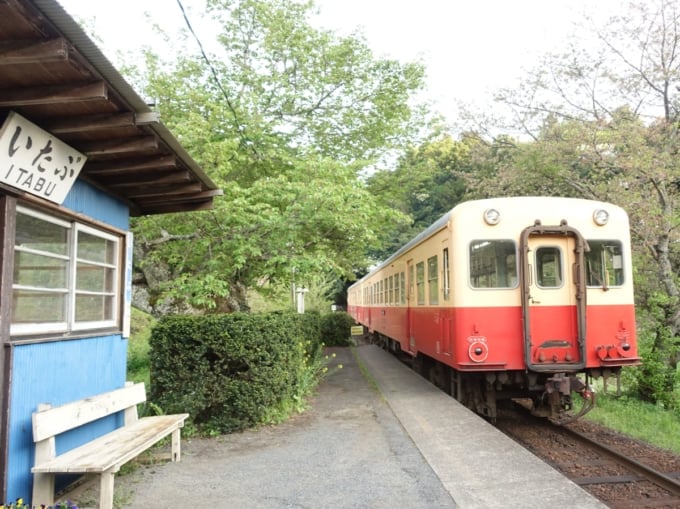
The train leaves Goi Station and travels through the city of Ichihara until it reaches Kazusa-Ushiku Station. After passing Kazusa-Ushiku Station, the train travels through the countryside and gradually heads into the mountains. The line is famous for the beautiful combination of cherry blossoms and rape blossoms in spring.
Lake Takataki is located near Takataki Station, and the Chibanian stratum, the first geological period in Japan to bear its name, is located about a 40-minute walk from Tsukizaki Station. The train then arrives at Yoro Valley. Yoro Valley is a scenic spot known for hiking, viewing autumn leaves, and hot springs.
The section from Yoro Valley Station to Kazusa-Nakano Station has only six round trips per day (five round trips per day on weekends and holidays). This section uses old-fashioned short rails, and the train moves more like a clatter than a clang, arriving at its final destination, Kazusa-Nakano Station.
What is the Boso Satoyama Trolley?

The Boso Satoyama Trolley is a train pulled by a diesel locomotive equipped with clean diesel, modeled after the steam locomotives that were used by Kominato Railway on the Kominato Line. The windows of all passenger cars except for No. 4 have been deliberately removed, allowing you to feel a pleasant breeze in the air. A trolley fee is 600 yen (as of April 2022) in addition to the fare. There are one or two round trips per day between Goi Station and Yoro Valley Station, but it does not run every day, so please check the Boso Satoyama Trolley website for details. There are paid parking lots at Kazusa Ushiku, Satomi, and Yoro Valley stations.
Isumi Railway Tourist Guide
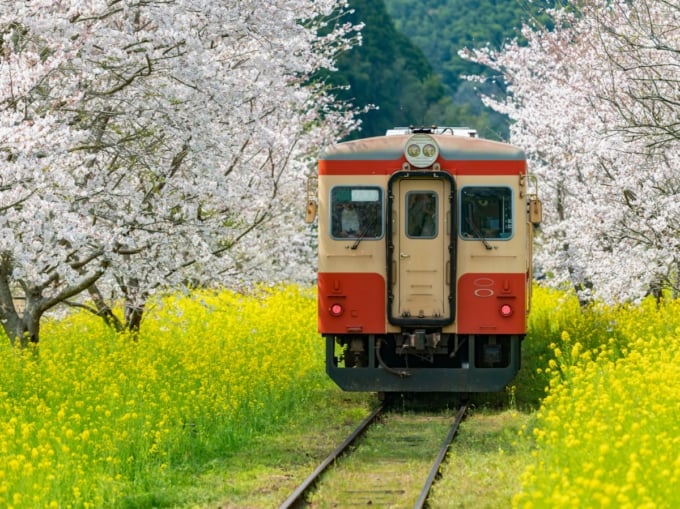
The Isumi Railway train departs from Kazusa-Nakano Station, the terminus of the Kominato Railway, and heads down the mountain. Here too, the rape blossoms and cherry blossoms are beautiful, delighting tourists. From Otaki Station, an intermediate station, you can access Otaki Castle, the castle of Honda Tadakatsu, and the castle town around it. History fans will love it. The train then arrives at Ohara Station. Isumi Railway merchandise is also on sale at Ohara Station, so be sure to take a look. From Ohara Station, you can return to Tokyo Station and other destinations on the limited express "Wakashio."
Enjoy sightseeing in Boso on the Kominato Railway and Isumi Railway

Kominato Railway and Isumi Railway are not only a means of transportation for local residents in the Boso region, but also attract tourists with various creative ideas. Ichihara City is also close to Kanagawa Prefecture if you use the Tokyo Bay Aqua-Line. Why not try a day trip on a local line from Tokyo?
